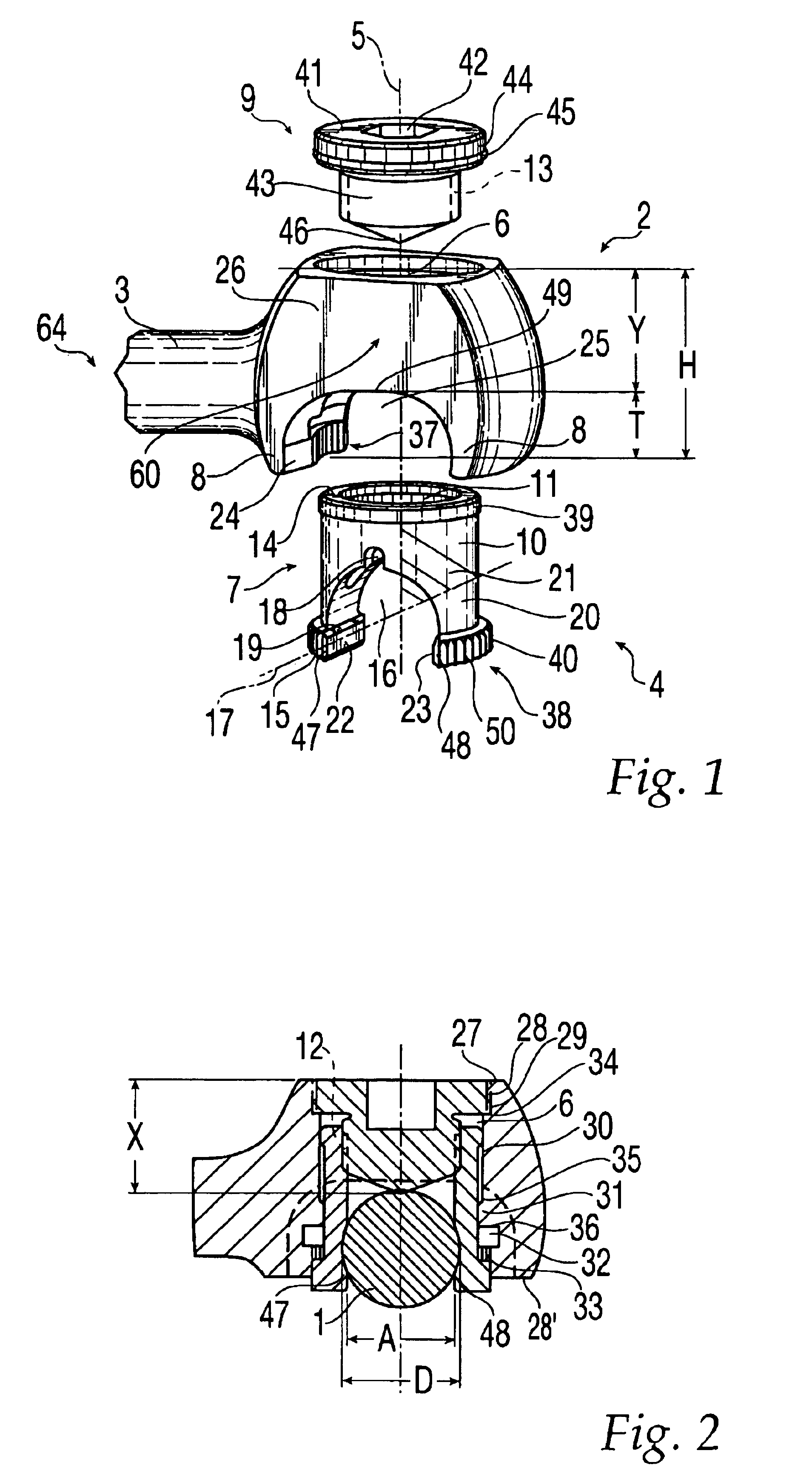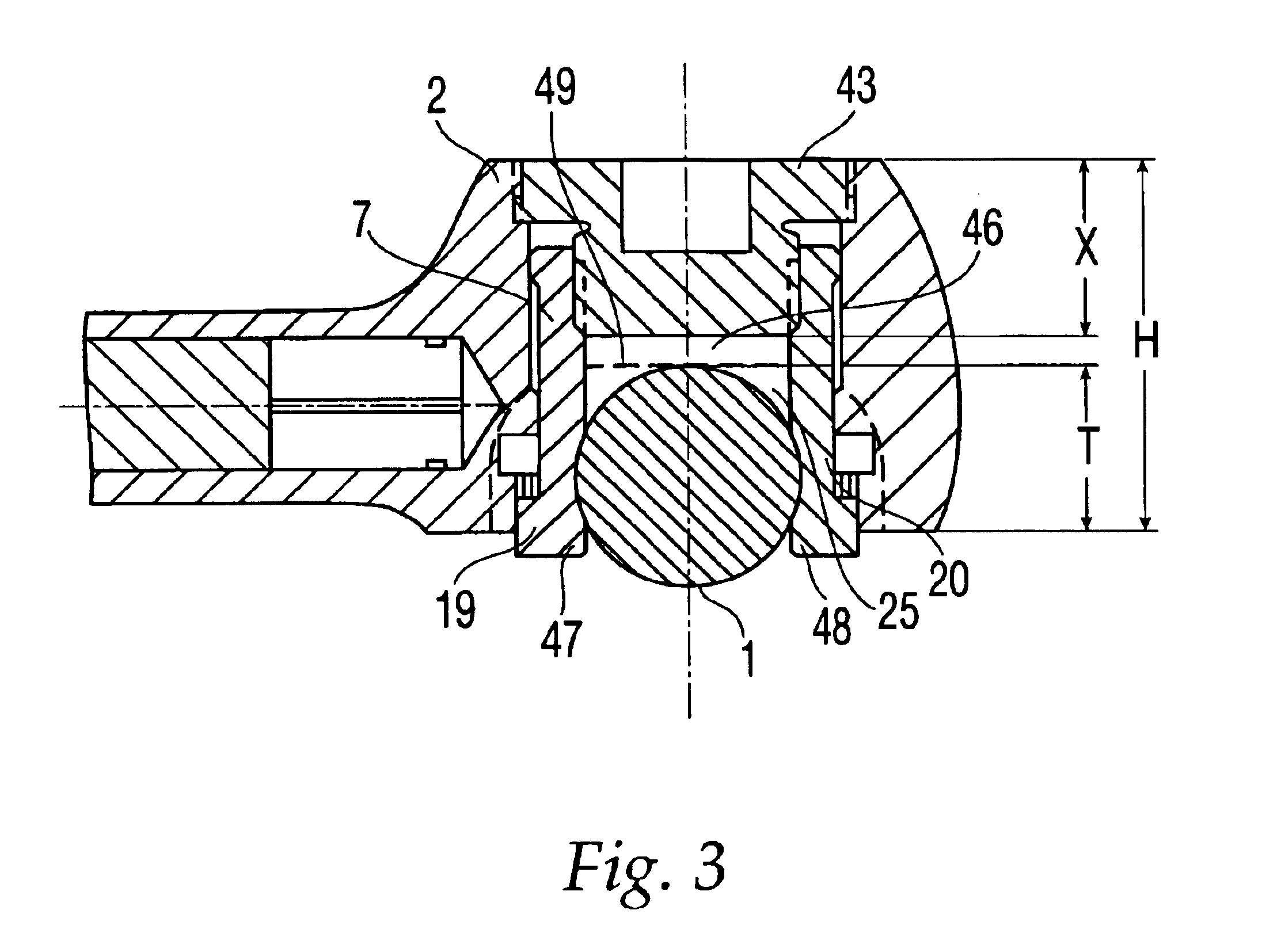Device for releasably clamping a longitudinal member within a surgical implant
a technology for surgical implants and longitudinal members, applied in the field of releasably clamping and connecting a longitudinal member within a surgical implant, can solve the problems of great rigidity of the implant as a whole, and achieve the effect of preventing the connection of the rod and great rigidity
- Summary
- Abstract
- Description
- Claims
- Application Information
AI Technical Summary
Benefits of technology
Problems solved by technology
Method used
Image
Examples
Embodiment Construction
With reference to FIGS. 1 and 2, an exemplary embodiment of a device according to the present invention is shown including a connecting element 4 between a longitudinal member 1 and a transverse rod 3. In this exemplary embodiment, connecting element 4 comprises a yoke-like connecting body 2 that is symmetrical with respect to a central axis 5 and has a through-bore 6 coaxially disposed on central axis 5. Connecting element 4 also includes a hollow-cylindrical clamping body 7 which is displaceable in through-bore 6 parallel to central axis 5, and a fixation means 9 for fixing longitudinal member 1 within the device.
Yoke-like connecting body 2 includes two side walls 8 that may run in the direction of central axis 5. A free space 25 is disposed between side walls 8, which have side faces 24 that are angulated to converge toward through-bore 6. As such, a longitudinal member 1 passing through free space 25 can be fastened within an angular range of between about 75° and about 105° wit...
PUM
 Login to View More
Login to View More Abstract
Description
Claims
Application Information
 Login to View More
Login to View More - R&D
- Intellectual Property
- Life Sciences
- Materials
- Tech Scout
- Unparalleled Data Quality
- Higher Quality Content
- 60% Fewer Hallucinations
Browse by: Latest US Patents, China's latest patents, Technical Efficacy Thesaurus, Application Domain, Technology Topic, Popular Technical Reports.
© 2025 PatSnap. All rights reserved.Legal|Privacy policy|Modern Slavery Act Transparency Statement|Sitemap|About US| Contact US: help@patsnap.com



